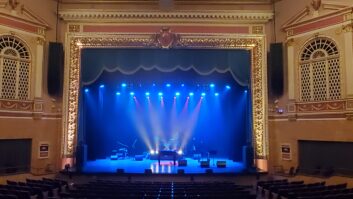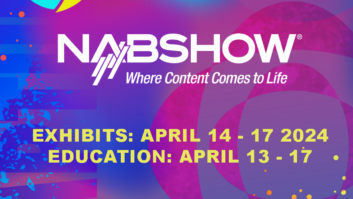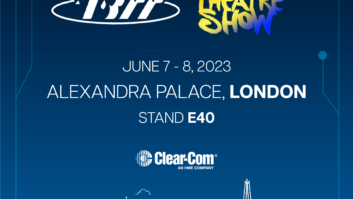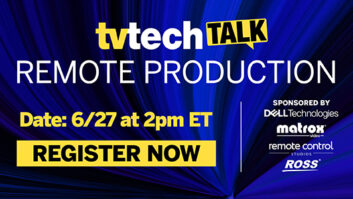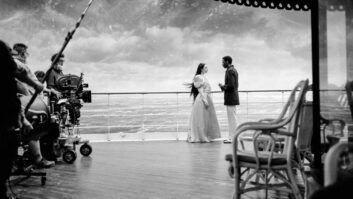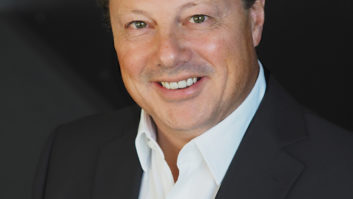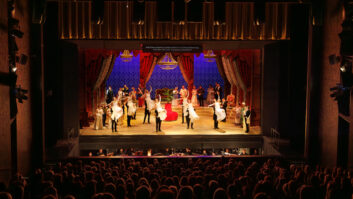London based firm Preevue is using 3D scanning, VR and AR technology to allow production companies to design and walk around their sets and check the view from every seat in any theatre without leaving their office
When building and designing a set/stage for a theatre production, there are many different things to consider.
With more than 1,300 theatres in the UK alone, many (if not all), will differ in design – sometimes greatly – with varying stage sizes, shapes and heights, seating arrangements (upper and lower tiering – posh boxes), plus roof supports…you name it.
For the production company – particularly one on tour – the lack of a one-size-fits-all format, means adjustments to their set design are inevitable. But it’s not always as simple as rejigging a few props here and there. Without solid preparation, the ramifications can have a damaging impact, both financially and from an experience, perspective should the design leave paying customers with, for example, impaired views or even force some seats to be out of action.
“I was the playground Pablo Escobar of Cadbury when I was 13 until I was mercilessly shut down by the head teacher”
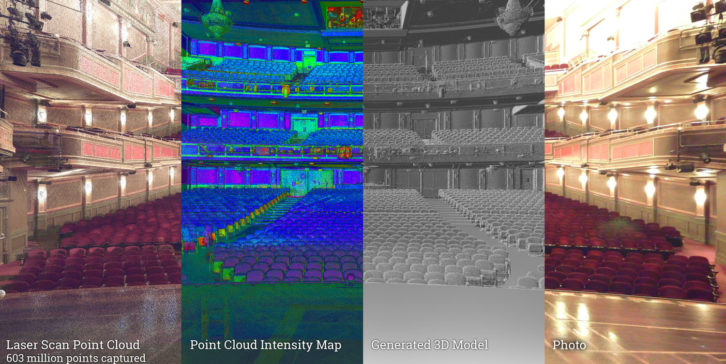
Preparation for such scenarios – which may not be discovered until a customer complains after the curtain is raised – have historically been hugely problematic, and difficult to foresee. Until now.
Thanks to VR and AR technologies, such issues are now able to be overcome, days, weeks, months or even years in advance, with stages and sets able to be designed, built and viewed long before the first ticket is sold.
Enabling this is entrepreneur Ryan Metcalfe who founded London based firm PreeVue in 2016 at the age of just 19 (irritatingly he was born in 1997, making us all feel incredibly old). Having studied Technical Theatre with a specialism in Theatre Technology at Guildhall School of Music and Drama, Metcalfe spotted a gap in the market, one which he has been able to fill through a combination of 3D scanning, VR and AR technologies.
Today, demand for PreeVue’s services stretched from London’s West End, to New York’s Broadway, with Bat out of Hell and Harry Potter and the Cursed Child names on its every growing list of customers in recent years.
AVTE caught up with its MD Ryan to learn more about the company.
Hi Ryan. How would you describe Preevue?
Preevue creates bespoke VR and AR visualisations for production and planning purposes. We originally started out with mainly theatre set design projects that allowed producers and directors the ability to see and walk around a set without it physically being built, but we’ve since expanded into architecture, construction, and live event production.
We’re currently working on four continents, with the vast majority of work in New York and London and a few others dotted around the world – it’s logical most of our work is in New York and London with the West End and Broadway.
The level of growth within the company was unprecedented but I guess it’s a wonderful problem to have.
When did you first come up with the idea for the company?
My background is in the production and technical side of theatre and it always struck me that there’s usually a huge amount of uncertainty throughout the planning process of even some of the West End and Broadway’s biggest shows. I simply couldn’t wrap my head around how a multi-million-pound production may never have a 3D computer aided design (CAD) model or plans of the theatre that weren’t hand-drawn in the 60s. So that’s when I started thinking that there must be a better way to visually see and understand the show’s design.
My general geekiness and interest in technology meant I was keeping up with the VR world but I didn’t immediately join the dots. VR headsets were initially marketed for gaming; once I realised, however, that the fundamental use of VR of immersing you in an environment at true scale could have other uses than shooting zombies, that’s when it all clicked.
I also had a great few years at the Guildhall School of Music & Drama too. I’ve no doubt that sitting in production meetings and staring at cardboard models reinforced the idea there. In production meetings with maybe twenty, thirty, forty people crowded around a scale model – how many of them can actually imagine what that set looks like at full scale? That’s the beauty of the VR work we do, it takes out all ambiguity and requirement of imagination, you simply wear a headset and you’re there.
It’s one thing to come up with an idea, but how did you execute it – given your young age, respectively?
This is my first limited company, I’ve had plenty of ventures in the past whether it be freelance graphic design work, website design or right back to cliché entrepreneur selling sweets in the playground. As a side-note, my sweet empire was a fantastic business: I bulk bought sweets at a cash and carry, undercut the prices of those splitting multi packs and still maintained higher margins. I was the playground Pablo Escobar of Cadbury when I was 13 until I was mercilessly shut down by the head teacher.
Back to Preevue… it was a very steep learning curve getting everything up and running – accounting, contracts, legal advice, payroll, the list goes on and on of areas I needed to pick up rather rapidly to make this work. Thankfully I’m surrounded by very competent and helpful family members and friends, lots with business experience aplenty, who are happy to lend a hand when I come calling.
When did you officially launch?
I formed the company in May of 2016 and officially launched at the end of June, but there’d been around six months of R&D prior to that. I formed the company just before I finally received delivery of the VR headsets
The main event that kickstarted everything was PLASA 2016, which was a whirlwind of madness from which we got an abundance of work and publicity.
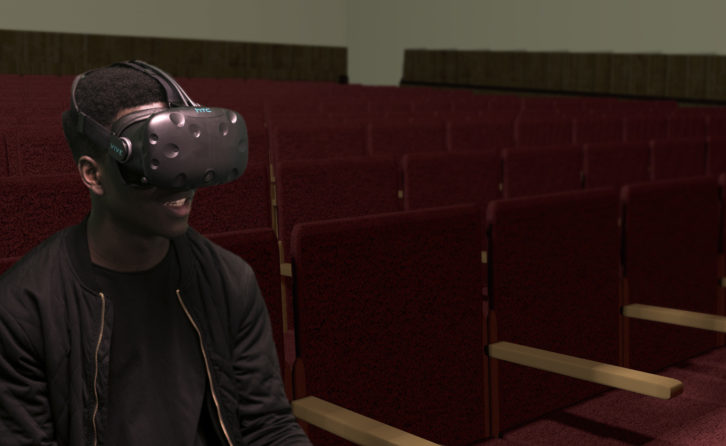
What would you say is your primary target market?
I started the company with set design in mind and that was mainly what we did for the first few months. It became quickly apparent, however, that there was huge value in the venue side of the production – there’s huge power in the production manager or producer being able to quickly press a button and look at the three or four potential theatres they’re looking at hiring, or being able to check sightlines in a theatre on the other side of the world from the comfort of their office.
We mainly work directly with producers and production managers, but we’ve also rapidly expanded in the past six months with lots of work in construction, architecture and event design and planning and there’s still more markets which I think would benefit from VR and AR visualisation.
Can you give some examples of whom you have worked with to date?
Unfortunately, I can’t talk about the people with whom we’ve worked or the projects we’re involved with as almost every single one of them is confidential for the foreseeable future.
Talks us through what it is you actually provide?
Every project is bespoke to what the client needs and no two projects have been the same. The typical West End or Broadway show projects involves laser scanning either the theatre that’s been chosen or multiple if it’s still being decided, laser scanning a set if it’s a transfer of a show and the set exists or turning the CAD plans into 3D model and combining the scan of the venue and set design itself. With this visualisation, producers can check sightlines, see whether that’s the right theatre for their production and visit the venue as many times as they want without an expensive and time-consuming flight.
Production managers can use the VR to explore the venues and, as they’re made from laser scans accurate to a millimetre, they’re incredibly precise.
Set designers use it to virtually work in a space and to see how their set adapts to a specific venue, lighting designers can use it to check angles from rigging positions in the technical galleries, revenue managers can choose how expensive a seat should be before the set is built – the list of uses is endless.
Talk us through the creative process.
The core of the visualisations we produce is the laser scan of the venue. This is a millimetre accurate scan of the venue, which we can then bring into VR. The level of detail these scans pick up is incredible, it’s like walking around a photograph when exploring one. Depending on the theatre, a laser scan usually takes a few hours and processing of that scan is usually a few weeks of manual clean-up after the model of the venue is generated. We then equip the client with a computer compatible with our VR visualisations that we’ve built in-house and all the relevant headsets and equipment needed. You can view the results through either VR headset or Hololens.
Tell us about some of the experiences, abilities and benefits that each technology provides.
VR is great for transporting somebody somewhere else, especially if it isn’t practical or possible to visit that place because it’s on the other side of the world, or it’s a construction site for an ongoing refurb, or it simply doesn’t exist yet in the case of new builds.
It’s also good for taking out all the ambiguity that surrounds 2D plans or 3D plans on a computer.
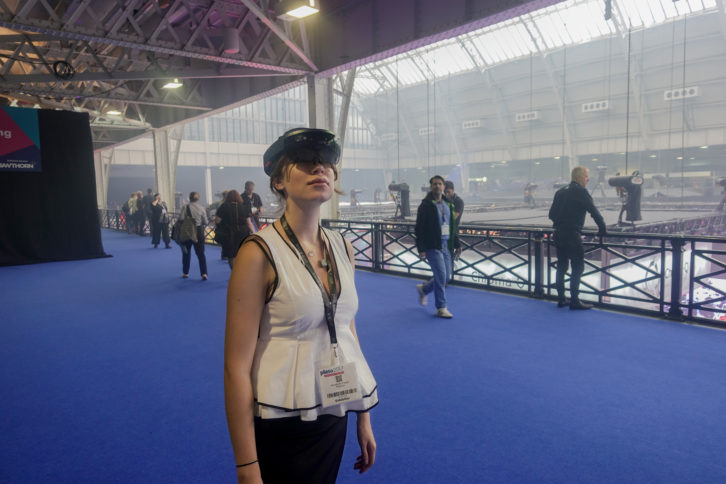
And AR?
AR with the Microsoft HoloLens is more about providing producers with a quick look at what a design will look like in a venue. We take a scan of an existing set or produce 3D CAD files which can then be viewed as a hologram through a headset, allowing a producer to physically walk around a venue and see how the set design looks on stage. It’s a different use to VR, but it’s a lot quicker using the HoloLens over laser scanning a variety of theatres if it’s convenient for the producer to visit the potential venue in person.
Beyond visual, are there any other interactive abilities for, say, a producer to use?
It’s possible to program in most elements of a show, we can put in all the flying scenery, automated scenery, and staging elements such as turntables. Lighting is doable too but is more aimed at LDs experimenting with angles and where to place specific fixtures over programming specifics. It’ll be great once we’re able to program full shows in VR using an actual lighting board but we’re a few years away from that.
How has the market responded?
On a whole, the response has been good and we haven’t had a single dissatisfied client. When I launched the company, there was some obvious worries about it in the industry. I think a fair few people misinterpreted what we’re offering as something that would replace their jobs, whereas instead it’s meant to be complementary. We didn’t set out to replace designers – we strive to make their jobs easier by providing a medium through which they can present their designs to a producer and director in the best way possible.
It initially was a hard time convincing the first few clients to give it try, but now that we’re working on a lot of projects the work is snowballing.
Is there a fear of the unknown for companies when it comes to VR and AR?
There’s certainly a fear of unknown with VR and AR and, especially in the theatre industry, there’s sometimes an initial mindset of “if it ain’t broke…” and people can often take a lot of convincing to just try it. We’re not helped either when companies rapidly jump on the VR and AR bandwagon, but don’t invest the time and effort in the R&D to make it work well. These companies are selling VR and AR, but we sell the visualisation service, VR and AR are simply the technologies that enable that.
People have sometimes already tried either VR and AR before we approach them and their previous experience with it was poor, leading them to think that that’s the benchmark for what’s achievable with the technology. Similarly, it indirectly damages the work we’re trying to do when other companies just cobble together a VR experience for an exhibition and sell it as a gimmick, without realising it’s the service that’s actually of value and not the technology.
Aside from theatre, where else do you see VR and AR being heavily adopted?
There’s a lot of potential for VR and AR in both professional environments and for consumer entertainment. We’re a few years off AR becoming accessible to the masses, while VR is just on the cusp right now. Gaming is great fun with VR and the price keeps dropping, with its current cost not too off-putting to your average gaming enthusiast. I foresee live events coming to VR in the next few years once streaming capabilities improve, I think on demand concerts or sports games will be coming soon. There’s a lot of concern and upset amongst the big players in the theatre industry over VR live streaming, but I personally think there’s less market appeal of that over something like a football match or an arena concert. I’m personally a huge advocate for VR and I wouldn’t particularly want to watch a theatre performance in it, at least with the technology in its current stages.
